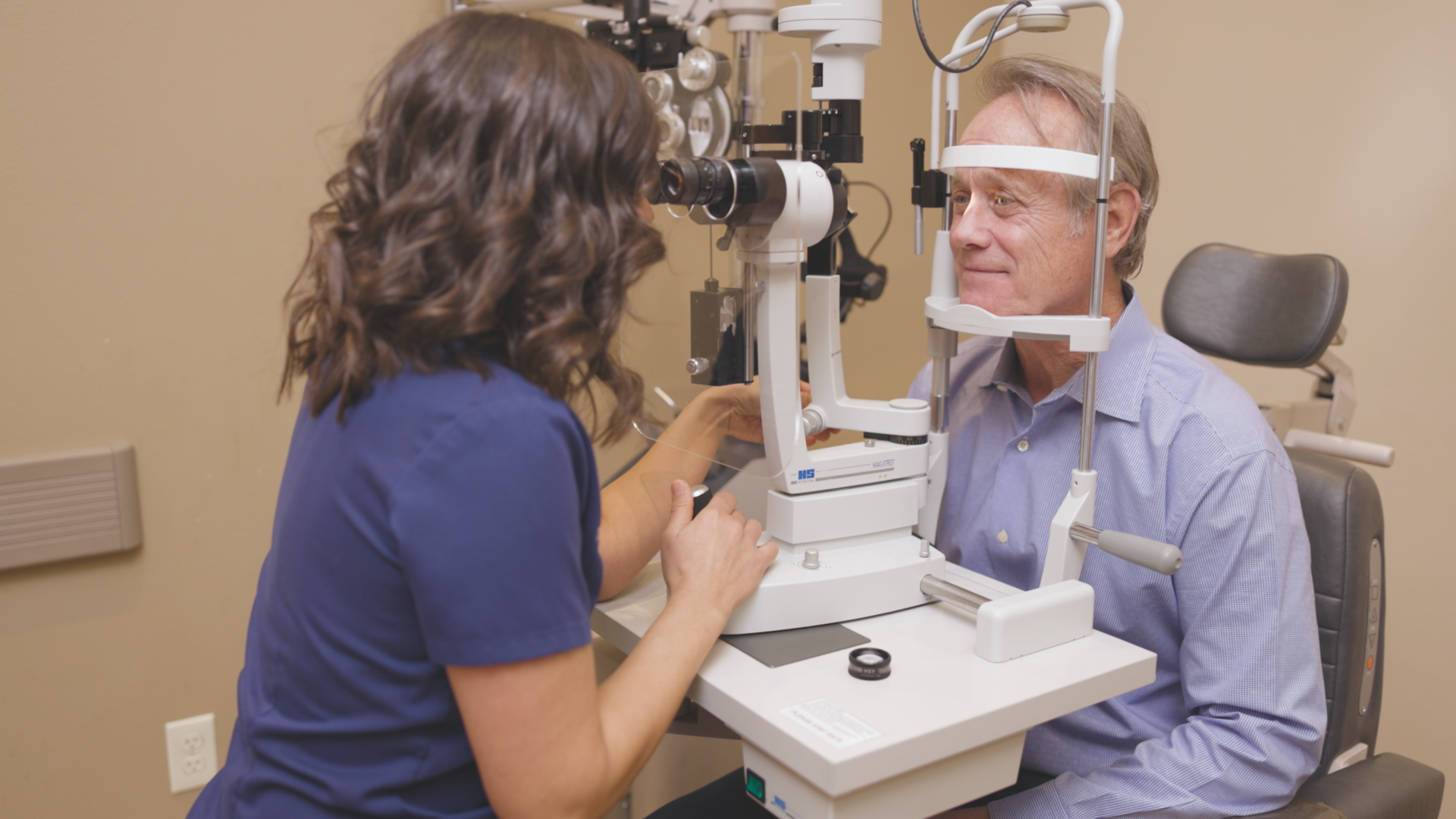Comprehending the Comprehensive Function of an Eye Doctor in Modern Eye Treatment
In the progressing landscape of health care, the range of an optometrist's role has actually substantially expanded, extending well past the boundaries of standard vision improvement. With innovations in technology and an increasing emphasis on preventative care, eye doctors are indispensable in diagnosing and taking care of chronic eye conditions, while also taking part in early condition detection. Their competence in innovative analysis strategies such as optical comprehensibility tomography is invaluable. Yet how do these duties converge with their role in promoting general eye health and wellness, and what does this mean for client end results in a joint health care setting?
Expanded Scope of Technique
In recent times, the role of eye doctors has advanced dramatically, with numerous professionals now embracing a broadened scope of practice that extends past conventional eye evaluations. This development reflects the growing acknowledgment of eye doctors as primary doctor in the area of eye treatment. Their obligations currently include a vast array of services, consisting of prescribing drugs for eye conditions, handling chronic eye illness, and performing minor operations. This change has actually been driven by advancements in optometric education, boosted medical training, and the raising requirement for extensive eye care solutions, specifically in underserved locations.
Further, optometrists are now much more associated with collaborative care, functioning very closely with eye doctors, health care medical professionals, and other healthcare specialists to make certain holistic patient treatment. This interprofessional collaboration is crucial in taking care of complicated instances that call for a multidisciplinary technique. Furthermore, eye doctors are playing a pivotal role in public health and wellness efforts, such as vision screenings and eye wellness education and learning, intended at boosting neighborhood health outcomes.
The broadened scope of technique for eye doctors not just enhances their capability to give comprehensive treatment however also addresses the growing demand for easily accessible and efficient eye care solutions, adding to general healthcare renovations.
Early Condition Detection
Very early detection of eye diseases is significantly ending up being a prime focus in the expanded function of optometrists. As key eye treatment service providers, optometrists are distinctively placed to recognize early indicators of eye conditions such as glaucoma, macular degeneration, diabetic person retinopathy, and cataracts. This pivotal function is essential, as very early medical diagnosis can substantially enhance the monitoring and prognosis of these problems, possibly preventing vision loss and boosting patient results.
Eye doctors use extensive eye assessments to find refined adjustments in vision and eye health. The capability to recognize early indicators of systemic health and wellness problems, such as high blood pressure and diabetic issues, with eye signs additionally underscores the significance of routine eye examinations.
Additionally, optometrists play an important role in client education and learning, emphasizing the relevance of routine eye examinations as component of general health maintenance. By promoting an aggressive technique to eye treatment, optometrists add dramatically to public wellness, making certain illness are caught and taken care of effectively before they can proceed.
Advanced Diagnostic Techniques
Advanced analysis techniques have actually reinvented the method of optometry, making it possible for professionals to detect and monitor eye conditions with extraordinary precision. Technologies such as optical comprehensibility tomography (OCT) offer high-resolution, cross-sectional photos of the retina, helping with early discovery of problems like glaucoma and macular deterioration.
An additional critical innovation is electronic retinal imaging, which captures thorough views of the retina utilizing high-def electronic cameras. This innovation is crucial in identifying changes in retinal structure in time, consequently aiding in the management of conditions like diabetic person retinopathy. Aesthetic field testing, boosted by computer-aided systems, enables accurate mapping of a person's visual field, important in tracking and identifying glaucoma development.
Corneal topography, one more notable diagnostic tool, produces topographic maps of the cornea's surface. This is particularly helpful in suitable call lenses and preparing refractive surgery. These innovative diagnostic strategies collectively allow optometrists to offer aggressive, targeted care, making sure better person end results and strengthening their pivotal function in eye wellness management.
Handling Persistent Eye Conditions
Handling chronic eye problems is a foundation of optometric care that requires a comprehensive understanding of various eye diseases and their long-lasting effects. Optometrists play a critical duty in managing, tracking, and diagnosing problems such as glaucoma, diabetic person retinopathy, and age-related Read Full Report macular degeneration. These problems, if left without treatment, can cause considerable visual problems or blindness, highlighting the vital importance of ongoing treatment and management.
Eye doctors employ a range of diagnostic tools, consisting of optical comprehensibility tomography (OCT), visual area screening, and fundus photography, to analyze the development of these persistent conditions. By closely checking modifications in ocular health and wellness, optometrists can readjust therapy plans to mitigate condition development. This might entail prescribing drugs, recommending way of living modifications, or coordinating with ophthalmologists for medical interventions when needed.

Duty in Preventive Treatment
Preventative treatment is a fundamental element of optometry that concentrates on preserving eye wellness and avoiding the beginning of eye conditions. Eye doctors play a crucial function in early discovery and prevention, using normal eye exams to identify threat elements and refined adjustments in eye health and wellness. Eye Doctor. These evaluations are not merely regarding vision correction but incorporate a detailed evaluation of eye features and frameworks, making it possible for the recognition of problems such as glaucoma, cataracts, and macular deterioration at a beginning
Along with diagnostics, optometrists educate people on lifestyle choices that promote eye health and wellness, such as proper nutrition, UV protection, and the importance of routine eye check-ups. They advise on the appropriate use electronic devices to stop digital eye strain, an expanding problem in the electronic age. Optometrists likewise offer support on safety eyewear for work-related and recreational activities, reducing the danger of injury.
Precautionary eye treatment expands to systemic health issues that manifest in the eyes, such as diabetic issues and high blood pressure. By teaming up with other healthcare professionals, eye doctors add to alternative client treatment, emphasizing the interconnectedness of systemic and ocular wellness. This proactive technique is essential in safeguarding aesthetic acuity and total well-being.
Verdict
Optometrists currently inhabit a critical function in contemporary eye treatment, defined by an go to this website expanded extent that consists of detecting and handling chronic eye problems, recommending medicines, and carrying out small procedures (Opticore Optometry). Their know-how in early disease detection is enhanced by advanced diagnostic techniques such as optical comprehensibility tomography and electronic retinal imaging. By highlighting preventative treatment and patient education and learning, optometrists contribute dramatically to total eye health and wellness, working together with other medical care professionals to make certain efficient and thorough patient outcomes

In enhancement to diagnostics, optometrists inform patients on way of life options that advertise eye health and wellness, such as appropriate nutrition, UV protection, and the value of normal eye exams.Precautionary eye care prolongs to systemic health problems that show up in the eyes, such as diabetes mellitus and hypertension.Optometrists now occupy a check it out crucial duty in modern-day eye care, characterized by a broadened scope that includes identifying and handling persistent eye problems, recommending medications, and carrying out small surgical treatments.